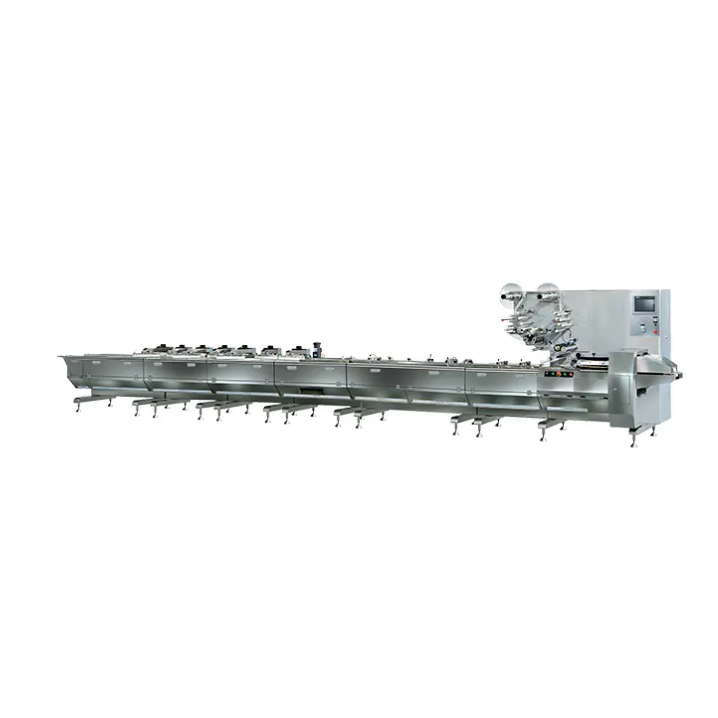How Chocolate Packaging Machines Are Designed and Built?

The manufacturing of chocolate packaging machines plays a crucial role in ensuring the efficient and hygienic packaging of chocolate products. For manufacturers in this industry, the challenge is to design machines that can meet the diverse needs of chocolate producers while maintaining high levels of accuracy, speed, and reliability. The process involves various stages, from concept and design to production and testing, each of which ensures that the final product functions smoothly and meets industry standards.
The journey of creating a chocolate packaging machine begins with understanding the specific requirements of the chocolate industry. Packaging for chocolate products must address multiple factors, including the protection of the product, ease of handling, and maintaining freshness. In addition, the packaging process must ensure that the chocolates are securely sealed without compromising the integrity of the product. Manufacturers often work closely with chocolate producers to identify their unique packaging needs, such as the type of chocolate (e.g., bars, pralines, truffles) and the desired packaging material (e.g., foil, plastic, paper).
Once the specifications are clear, the design phase begins. In this stage, engineers and designers focus on creating machines that are capable of accurately and consistently packaging chocolate products. The design must accommodate the characteristics of chocolate, which can be delicate and sensitive to temperature changes. For example, chocolate packaging machines are often equipped with temperature control systems to prevent the chocolate from melting during the packaging process. The machine may also include specialized conveyors, feeders, and wrapping mechanisms tailored to the size, shape, and fragility of the chocolates.
The next stage is prototype development and testing. Once the design is finalized, manufacturers typically create a prototype machine for testing. This allows the team to evaluate the machine’s performance and identify any areas that need improvement. During testing, the machine is run with various types of chocolate to ensure it can handle different shapes, sizes, and packaging materials. Adjustments are made as needed to enhance efficiency, reduce waste, and improve the overall performance of the machine.
Once the prototype passes testing, the machine enters the production phase. This involves sourcing the required materials and components, such as motors, sensors, and control systems. The manufacturing process includes precision engineering to ensure that each part fits together properly and functions smoothly. Many modern chocolate packaging machines are automated, with components like automated feeders, sorting systems, and sealing units that work together to package chocolates at high speeds. Automation not only increases efficiency but also reduces the risk of human error, ensuring that the machines can maintain consistent output with minimal oversight.
Quality control is a critical aspect of the manufacturing process. Every machine is subjected to rigorous testing to ensure that it meets the required standards for performance, safety, and durability. Manufacturers conduct detailed inspections of each component, and after assembly, the machines undergo functional tests to ensure they operate as expected. Testing may include checking the accuracy of the packaging process, verifying the sealing quality, and ensuring that the machine operates at optimal speeds without malfunctions.
Finally, packaging and delivery are essential steps in the manufacturing process. Chocolate packaging machines are typically packed securely to avoid any damage during transport. Given the complex nature of these machines, special care is taken to ensure that they arrive at the customer in working order. Additionally, manufacturers may provide training for clients to ensure proper operation and maintenance of the machines. This training often includes information on machine setup, routine maintenance, troubleshooting, and optimal performance practices.
In conclusion, the manufacturing of chocolate packaging machines requires a combination of precise engineering, careful design, and strict quality control to ensure the packaging process meets industry standards. Manufacturers focus on creating machines that can handle the delicate nature of chocolate products while providing efficiency and reliability. With advancements in automation and technology, chocolate packaging machines continue to evolve, offering enhanced functionality to meet the growing demands of the industry.
- Art
- Causes
- Crafts
- Dance
- Drinks
- Film
- Fitness
- Food
- Games
- Gardening
- Health
- Home
- Literature
- Music
- Networking
- Other
- Party
- Religion
- Shopping
- Sports
- Theater
- Wellness


